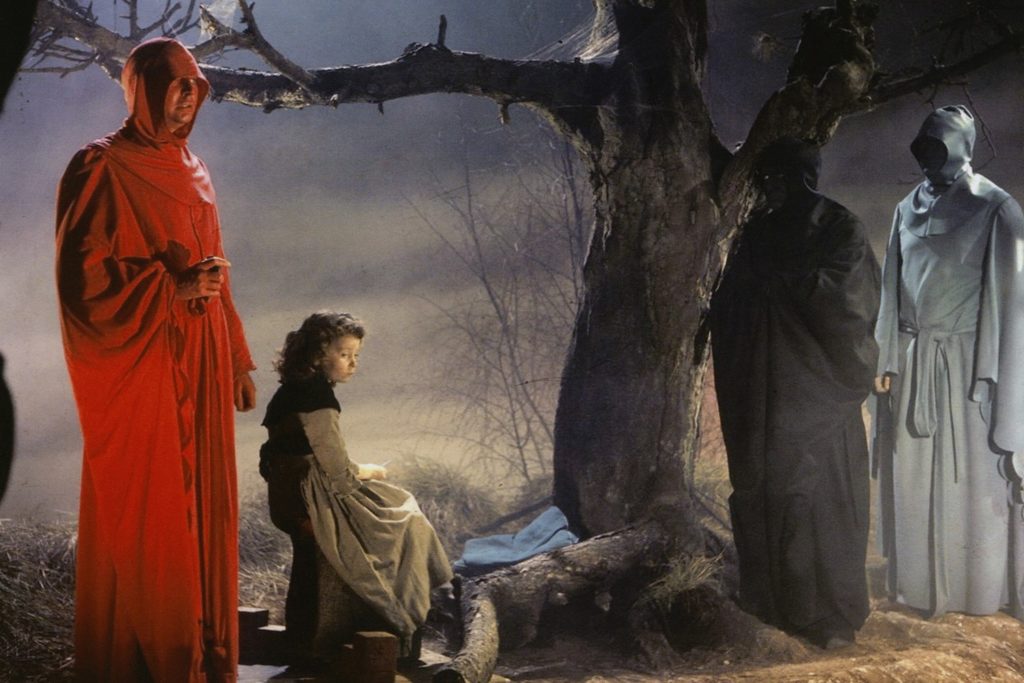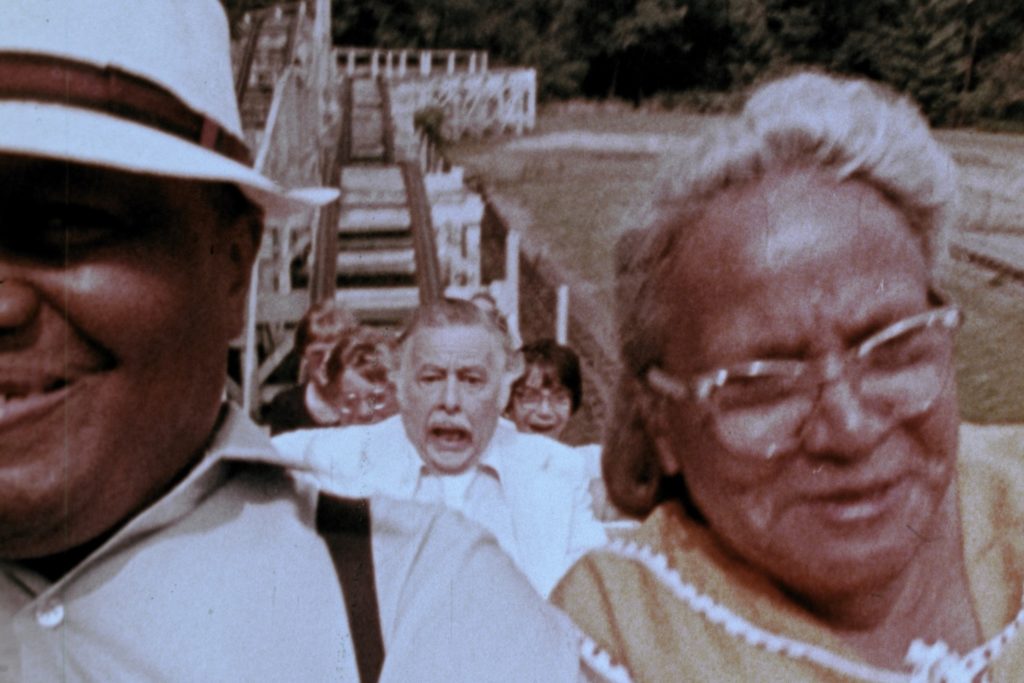By Daniel Eagan
The Museum of Modern Art runs its essential To Save and Project series from January 9 – 22. This is the 17th edition of a series devoted to showcasing significant film restoration projects from around the world. Organized by Dave Kehr, curator, Department of Film, To Save and Project covers a wide range of filmmaking, from Hollywood blockbusters to documentaries, exploitation film, independents, home movies, and experimental pieces.
This year’s series spotlights two films from the museum’s own archives: Isn’t Life Wonderful (Jan. 10) and Loves of Carmen (Jan. 9, 22). Directed by D.W. Griffith, Isn’t Life Wonderful was shot primarily on location in Germany and Austria. Based on a novel about the travails of Polish immigrants who suffer under a crumbling economy that would lead to the rise of Hitler, it stars Carol Dempster and Neil Hamilton.

Griffith had lost a lot of his clout (and his main star, Lillian Gish) when filming began for Isn’t Life Wonderful. Technically the film feels more dated than those he had made ten years earlier. On a narrative level, he was still relying on outdated stereotypes and melodramatic plotting. He had the added disadvantage of working with Dempster, a performer with limited skills. The film has its defenders, but it compares poorly with some other films that came out in the same year: Greed, Girl Shy, Sherlock Jr., and The Last Laugh.
Raoul Walsh’s Loves of Carmen (Jan. 9, 22, with piano accompaniment by Ben Model) helped cement Dolores del Rio’s status as an international star. Sadly, the 1927 U.S. release appears to be lost; this version has been assembled from an international cut saved in the National Film Archive of the Czech Republic.
Opening for Loves of Carmen is another 1927 film long thought to be lost: Duck Soup. Stan Laurel and Oliver Hardy had appeared together in films prior to this, but Duck Soup is the first project where they worked as recognizable characters in a team, nine months before they were officially introduced as such in Putting Pants on Philip.
Duck Soup is one of three films restored in the series by the French company Lobster Films. The other two are independent features by director Louis Valray: La belle de nuit (Jan. 12, 21) and Escale (Thirteen Days of Love). Both films screen January 12, when they will be introduced by film historian Serge Bromberg, and again on January 21.

Working outside the mainstream, Valray brought a distinctive take to familiar plots about betrayed lovers seeking revenge. Both films include musical numbers, but they are staged on stark sets without the glamorous trappings of big-budget films. If he felt like it, Valray would leave his nominal stars to follow other characters, or to explore the docks and alleyways of red-light districts.
Also outside the mainstream is Gustav Machatý’s notorious Extase (Ecstasy), screening January 9 and 18. A cause célèbre for its nude scenes of Hedy Lamarr, the restoration of the uncensored 1933 Czech version brings back into focus the film’s strong visual style and innovative use of sound.
Rob Byrne of the San Francisco Silent Film Festival will be introducing the January 11 screening of The Signal Tower (also screening Jan. 14), a 1924 thriller starring Virginia Valli, Rockliffe Fellowes, and Hollywood icon Wallace Beery. Director Clarence Brown had worked with Maurice Tourneur on groundbreaking titles like The Last of the Mohicans, and he brought a similarly distinctive visual style to a story about runaway trains in the mountains of northern California. Beery gives a masterclass in scene stealing. The SF Silent Film Festival restored the film from two 16mm prints, with the help of Kevin Brownlow’s Photoplay Productions.
The 2020 To Save and Project dips into the horror genre with screenings of The Masque of the Red Death (Jan. 17, 20) and Mystery of the Wax Museum (Jan 17, 20). The former, produced and directed by Roger Corman in 1964 and shot by Nicolas Roeg, turns Edgar Allan Poe’s short story into a visual extravaganza, as nobleman Vincent Price exploits economic inequality during the time of the plague. Also screening January 17 and 20, Mystery of the Wax Museum features Anton Grot’s revolutionary art direction. Along with Doctor X, it marked the end of Warner Bros.’ infatuation with two-color Technicolor.

One significant trend in this year’s To Save and Project is its focus on home movies. When MoMA reopened in the fall after its major redesign, a new installation outside the Roy and Niuta Titus theater displayed dozens of home movies. And in conjunction with Home Movie Weekend January 10–12, MoMA will be screening landmark home movies from the National Film Registry. At a workshop on January 11, visitors will be able to have their 8mm films and VHS tapes digitized.
The three National Film Registry programs include noteworthy titles like Zapruder Film of the Kennedy Assassination and Tacoma Narrows Bridge Collapse as well as more lighthearted pieces like Disneyland Dream by Robbins Barstow (featuring a cameo by Steve Martin). Of special interest is the haunting Cologne: From the Diary of Ray and Esther, which documents a rural town in Minnesota in 1939. Isolation is offset by hard work and liquor.
Keeping with the home movie theme, To Save and Project includes two works on January 11 by the experimental filmmaker Ken Jacobs and Jan Oxenberg’s Home Movie (1973), restored by IndieCollect. Cited as one of the first lesbian feminist films, Home Movie will be screening January 11 and 16 with Amusement Park, an hour-long public service announcement for the Lutheran Church directed by George Romero. Yes, George Night of the Living Dead Romero. Oxenberg will introduce the January 11 screening of Home Movie. And on January 10 MoMA is showing a special program of four films by Stan Brakhage, perhaps the most illustrious “home movie” artist.

Screening on January 12, Navajo See Themselves is a collection of six short films shot in 1966 on a Navajo reservation in Arizona. That year Sol Worth received a grant from the National Science Foundation to test theories of visual communication. He teamed with John Adair, an anthropologist who had made a documentary about silversmiths in the Southwest. Their idea was to equip the Navajo in Pine Springs, Arizona, with 16mm cameras to see how their visual language would develop.
The results were published in 1972 by the Indiana University Press as Through Navajo Eyes: An Exploration in Film Communication and Anthropology. For years that’s how these films were packaged. The shorts vary dramatically in style. In The Shallow Well, filmmaker Johnny Nelson documents how the Navajo constructed a well; The Spirit of the Navajo is a portrait of medicine man Sam Yazzie filmed by his granddaughters. The Intrepid Shadows is an ambitious piece by Alfred Klah that explains landscapes in terms of narrative archetypes.

Federico Fellini’s Roma, screening January 16 and 19, was restored by the Cineteca di Bologna with the support of the Hollywood Foreign Press Association. It includes footage cut from the original U.S. release. Roma is an early taste of a complete Fellini retrospective screening at MoMA in December.
Also of note: three short documentaries by Leo Hurwitz (Jan. 13, 18), followed on the 18th with a discussion by his student, Manny Kirchheimer. And The Cheaters (Jan. 14, 18), the only extant feature from the three McDonagh sisters. Shot in 1929, The Cheaters was directed by Paulette McDonagh, with art direction by Phyllis McDonagh. It starred “Marie Lorraine,” the screen name for Isabel McDonagh. The screenings will be introduced by Susan McDonagh Fryer, the director’s niece. Preceding the feature is a short clip from Those Who Love, a lost feature of jazz babies dancing on the beach and a lost generation fighting in bars.


Share this post